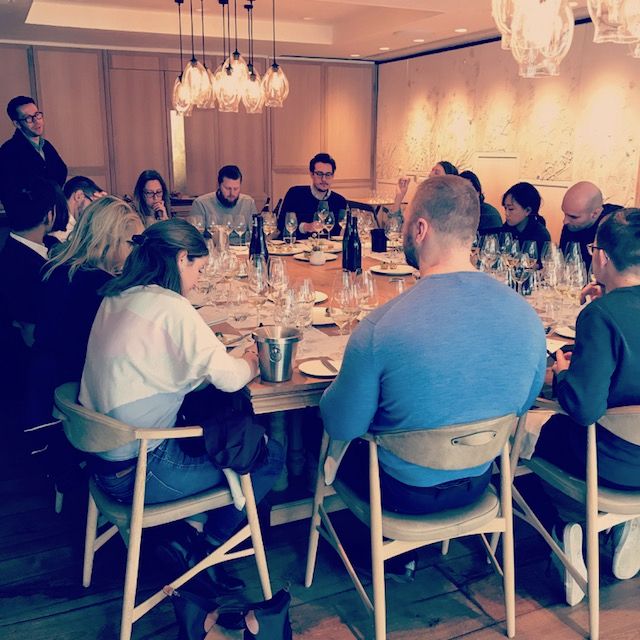The Somm Sessions are a four-part series organised by Wines of Germany exploring exciting new styles of wine coming out of Germany. Here’s what happened at the first…

Jan Konetzki, standing, is leading the Somm Sessions series
German Riesling has undergone something of a revolution in recent decades, with winemakers focusing on producing drier, crisper food-friendly styles in tune with modern consumer demand. As a result, we are now seeing a plethora of high quality, hand-crafted, hugely versatile and refined wines emerging from the country, which better reflect changes in vintage as well as characteristics of their terroir.
However, while German Riesling can hardly claim to be an undiscovered grape, featuring on practically every premium on-trade wine list in the country, it is still sometimes held back in the UK market by consumer confusion over the complexity of the grape names and wine styles, making it a hard sell for many sommeliers.
To tackle this issue and reintroduce a new generation of top sommeliers to the grape, Wines of Germany has just launched the Somm Sessions, a series of special events to be held around the country to raise awareness and understanding of the wide range of German wines, including their pre-eminence in Riesling production and what a brilliant match Riesling can make with food. The Somm Sessions are also an opportunity for busy sommeliers to get together to share their own experiences of working with German wine in their restaurants.
The first event was held last month at Oliver Dabbous’ Hide in London’s Mayfair, and hosted by sommelier Jan Konetzki, director of wine at Ten Trinity Square, ambassador for Chateau Latour and Artemis Domains, a lover of German Riesling and expert in German wine.
It attracted 15 of the capital’s top sommeliers, and is the first in a series of similar events which will be held throughout the year in various UK locations, including Brighton and Manchester. These will have their own individual wine themes and be attended by local sommeliers.
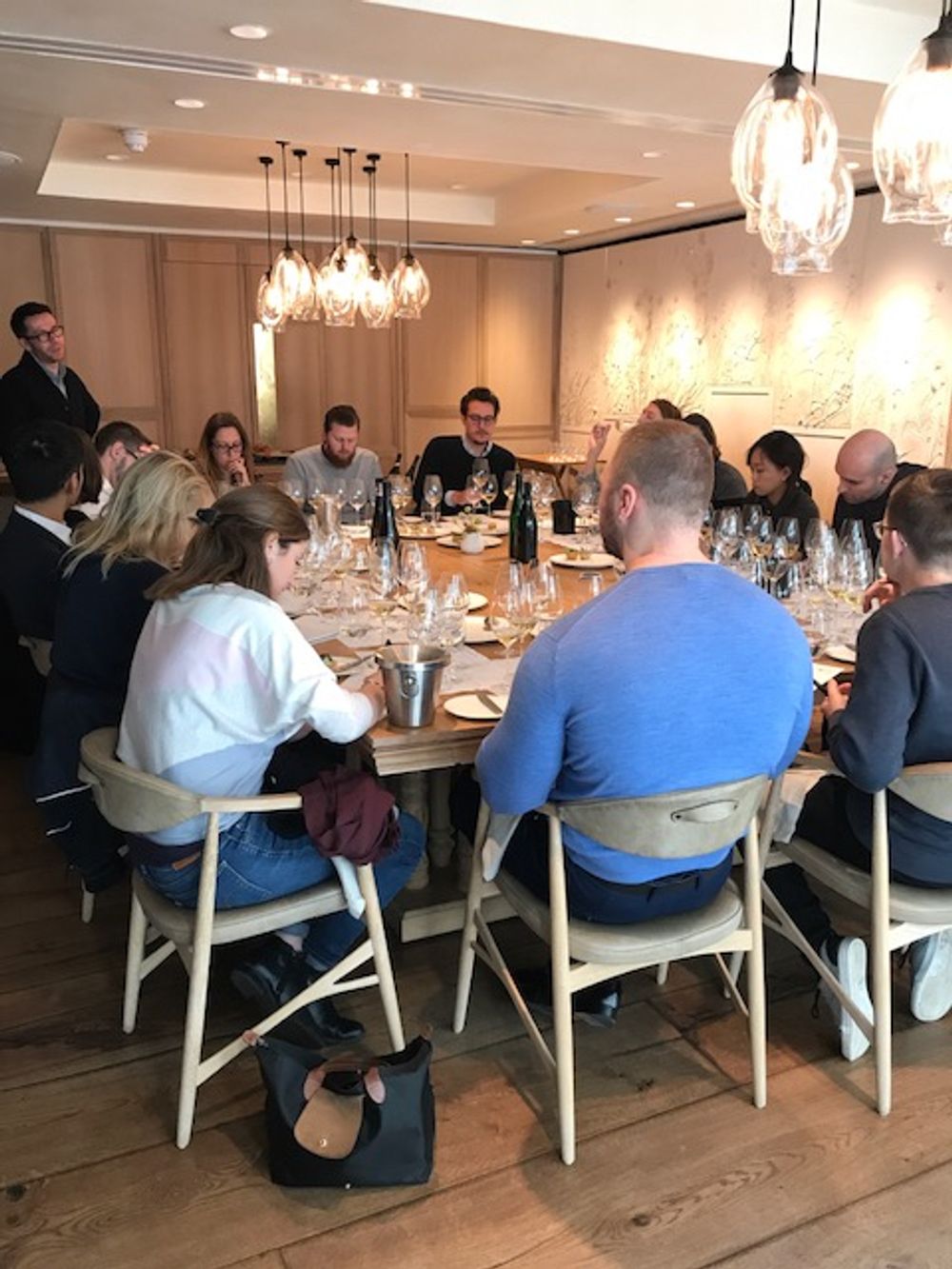
The first Somm Session panel of sommeliers
Sommelier panel
The attendees at the inaugural London event were:
Beth Brickenden, London Union/Street Feast
Aaron Jolly, London Union/Street Feast
HeeSoo Kang, Flat 3
Sandra Bein, Mere
Oliver Espersen, Kerridge’s Bar and Grill
Bert Blaize, Mandrake Hotel
Charlie Blightman, Noble Rot
Joshua Castle, Noble Rot
Emanuele Bettio, The Greenhouse
Christopher Eon, The Greenhouse
Kiki Evans, Unwind
Richard Pledger, Unwind
Ryosuke Maishio, Umu
Erik Simonics, La Dame de Pic Four Seasons
Solene Bonhumeau, Five Fields Restaurant
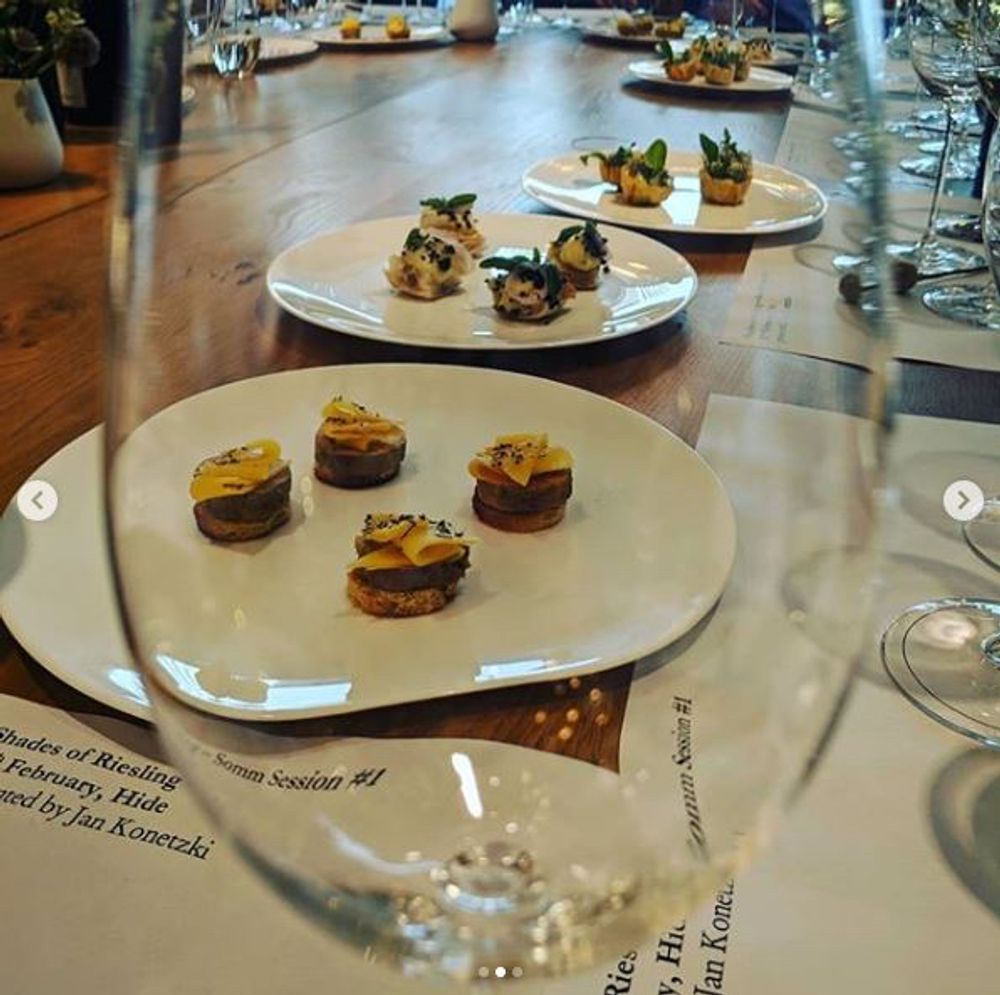
The wines were paired with specially created canapes by Hide
Revered by those in the wine industry, and much admired for their versatility in style, from bone dry to delectably sweet, and their ability to match with many different foods and cuisines, Germany is widely recognised as the spiritual home of Riesling, and where this iconic grape achieves unsurpassed levels of greatness. From weighty Riesling Spatlese to delicate Riesling Kabinetts, Germany’s range of Rieslings is undoubtedly stellar.
Konetzki opened the session with his own take on why German Rieslings are so important: “Everyone in the trade loves Riesling – there’s so much diversity, there are so many facets to it and it’s very easy to drink.”
Riesling revolution
But that was not always the case and he says we all owe a great deal of gratitude to the producers in the Rheingau who were responsible for what he calls “the revolution” that has taken over in Riesling production over the last 30 years.
“Until the 1980’s it was all about the sweetness. The later the harvest the sweeter and more alcoholic the wine, so the system rewarded late harvesting wines and fermented wines that were off-dry as it was a style that had been popular for centuries. But in Rheingau producers started to develop a drier form of Riesling, to offer an alternative to the predominantly sweet wines of the time. These wines began emerging as early as 1984.”
It’s why, he said, we can now enjoy such a wider variety of styles to suit all palates. It has also, in turn, encouraged other producers around the world to pick up the mantle and start to make their own styles of Riesling.
So while Germany is still considered the spiritual home of Riesling, grown in all 13 of Germany’s wine regions and accounting for half of total global production, producers as far away as Australia and New Zealand have also become renowned for the quality of the Rieslings they are able to produce.Which should be seen as a positive, said Beth Brickenden, wine director at London Union. “Some consumers are discovering Riesling via the New World and then that gives them the confidence to turn to German Riesling,” she explained.
Oliver Esperen, Kerridge’s deputy head sommelier, agreed. “New World Rieslings have in some circles put Riesling back on the map in a more easy and understandable manner.”
But Charlie Blightman, head sommelier at Noble Rot, was not so sure: “Perhaps for a small amount of wine-focused people going through their WSET, but in general, they are very different and I don’t think people make the connection that Germany is the home of Riesling. Which is a shame as German Riesling has such great versatility, they are wines that can be drunk anytime, and also have great longevity and are still reasonably affordable.”
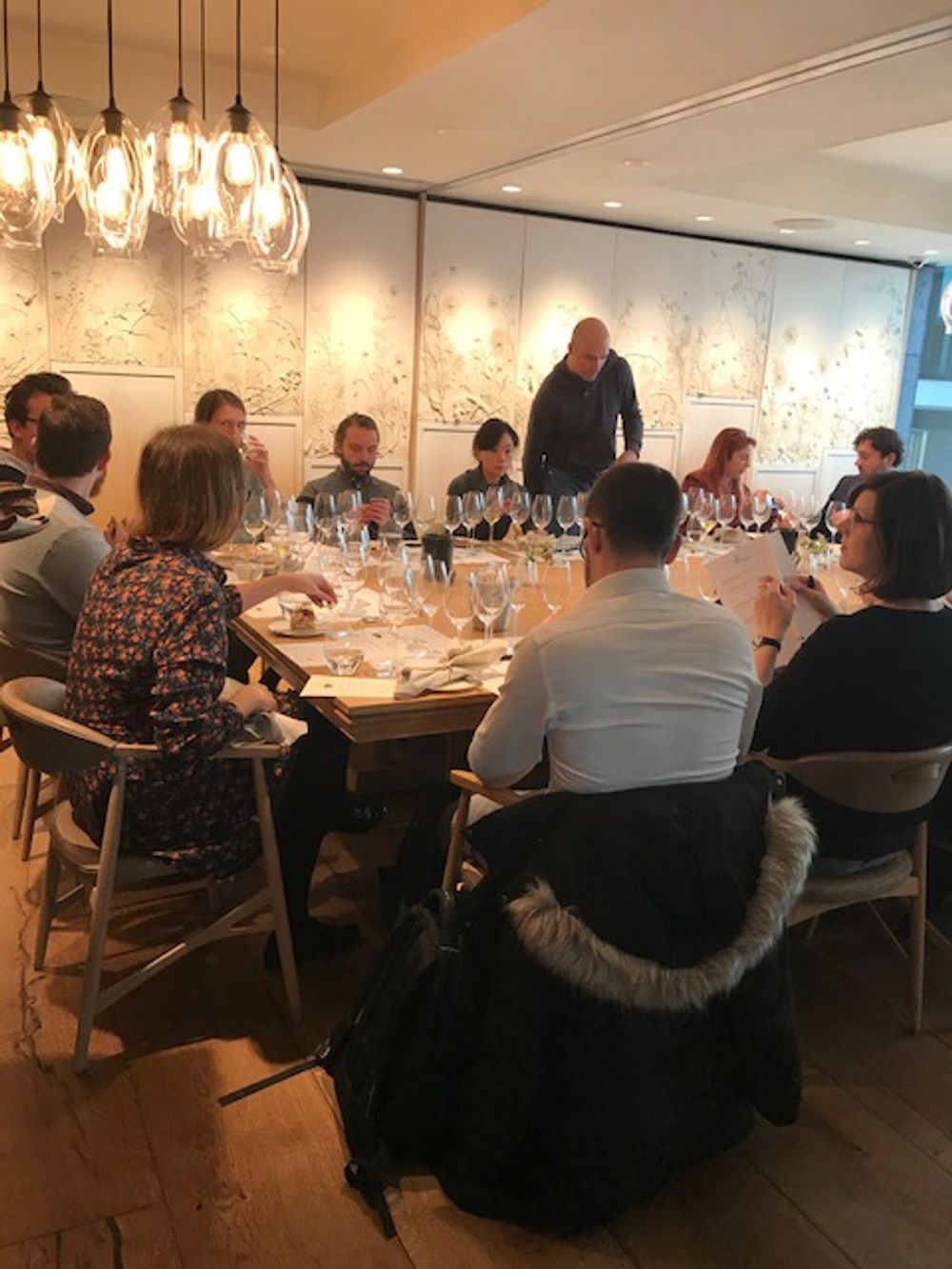
The sommeliers were able to share their experiences of working with German wine
Konetzki was interested to gauge the views of the panel on how hard a sell Riesling still is: “We have a wide range of restaurants represented here, from top Japanese to classic French to celebrity hot spots to serious wine places. But is Riesling something you still have to explain to your customers?” he asked.
Bert Blaize, newly appointed group beverage director for Brunswick House, St Leonards and Orasay, said it was. “British consumers still think it is just a sweet wine, and it’s not just older consumers who believe this – younger people too also have these perceptions.”
Versatility and value
Blaize also sees it is a great opportunity to help show guests different styles that he is confident they will like. “I want to introduce as many guests in the restaurant to dry examples of Rieslings as possible. There’s so much value for money when you take into consideration the quality of the wines. These wines are also incredibly versatile when it come to food and wine pairings, they have so much power and complexity.”
His approach is to focus more on the winemaker and the story behind the wine. “It’s all about being creative in how you approach the problem,” he said. And getting consumers to taste the wine is crucial.
Konetzki agreed: “It’s much easier to sell the wine over the vineyard, so with a Grand Cru dry white wine from Germany I’d rather talk about the particular story behind the wine and how it is made, rather than the grape.”
Esperen is keen for customers to see for themselves just how versatile and food friendly German Riesling can be. “German wines are incredible and tasty and are done with such a high quality with current wines available,” he said. “However, Rieslings are hard to understand for common London wine drinkers as they often hold the perception that they are all sweet because of various reasons, due to the bottle shape, history, and strange wording. No one knows or understands the Prädika system and therefore pick the easy option because people are usually happy with crisp easy wine that’s easy to understand.”
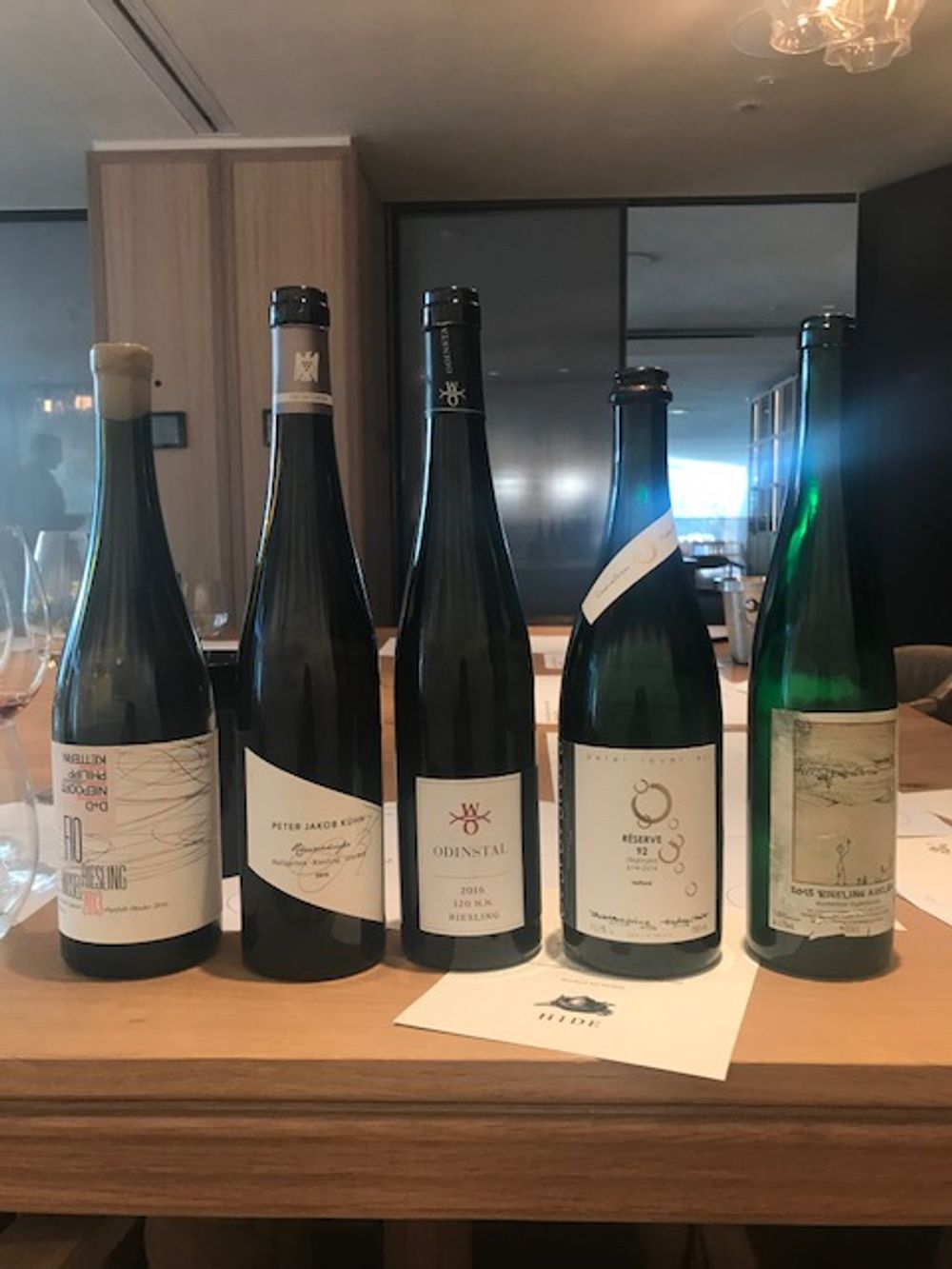
Blightman at Noble Rot added: “I think a lot of people aren’t confident enough to say if, when tasted, they recognise the wines as sweet or not. There is still a fair bit of ‘talk dry, drink sweet’ going on, as if wines with a touch of residual sugar are somehow out of date or un-cool. But it isn’t a problem for Prosecco so it isn’t a dislike of sweeter style wines.”
Distinctive labelling
Blightman thinks German producers should celebrate their distinctive labels. “There is a lot of tradition and quality in the German regions, and I think some producers think the answer is to try and move away from that and make something trendy with a cool label that looks like all the other wines in the world. I think the opposite is true. They should be proud of the tradition of winemaking they have and really celebrate that, some of those gothic labels are very unique.”
But there is a tend, said Konetzi, for an increasing number of German producers to use more international varieties or put the English translation of the German name on the label. “If you have, for example, Spätburgunder written on the label it is a much harder sell than Pinot Noir. As a result, many more people are now labelling their reds as Pinot Noir,” he explained.
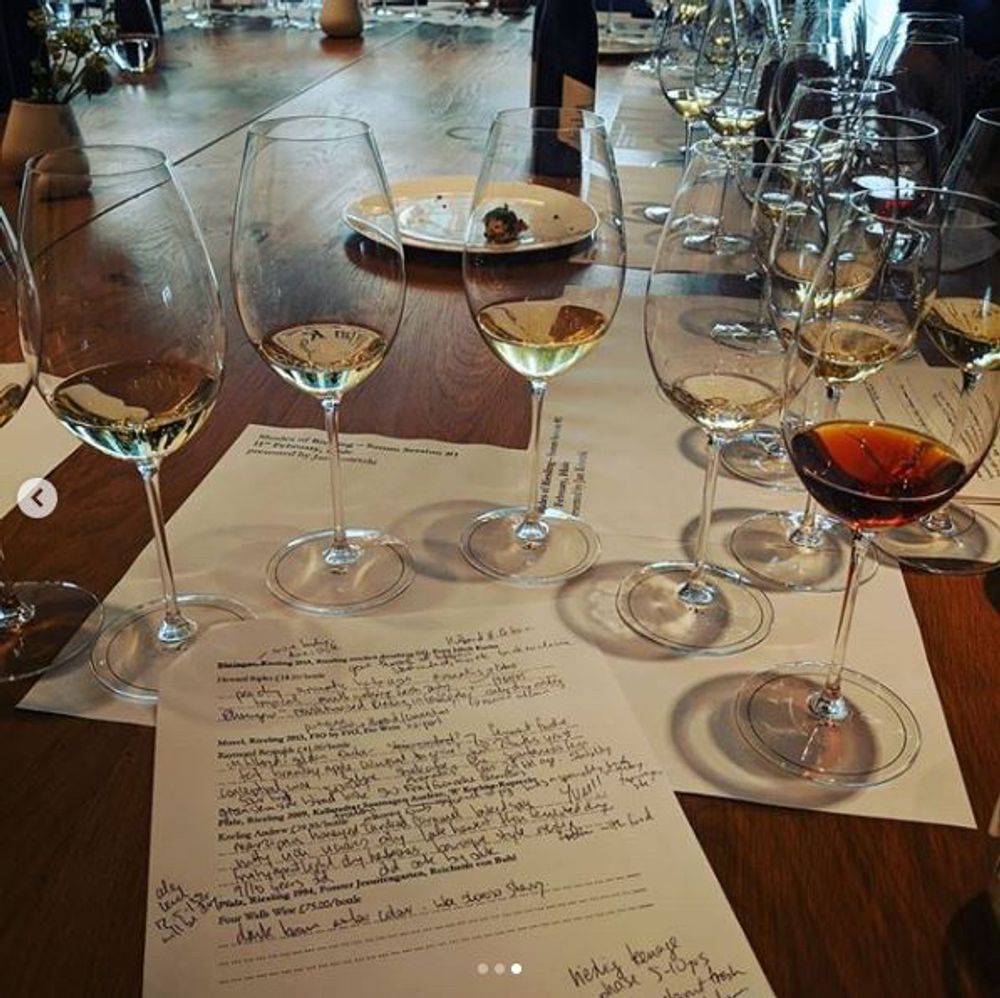
A perfect match
Solene Bonhumeau, sommelier at the Chelsea-based British Five Fields Restaurant, said he had noticed how popular German Riesling is with Asian customers and they have a particular affinity for off-dry styles. And, of course, Riesling is renowned for being a perfect partner for many styles of Asian cuisine.
Ryosuke Maishio, sommelier at Michelin-starred Japanese restaurant Umu in Mayfair, is such an advocate for German Riesling that he lists between 20–25 different styles, and that his customers associate the Riesling with Germany more readily than any other region or country, including Alsace, Austria or Australia. “British consumers are definitely more open to German wines,” he said. “Sweet wines – or those that are perceived to be sweet, can be difficult to sell in the UK, but it depends very much on what cuisines you choose.”
But it’s not just Asian food that is a great match for German Riesling, pointed out Konetzki. “A slight bit of sweetness in your wine is an amazing thing for food pairings, not just classic dishes such as foie gras and Sauternes, but pork and apple sauce paired with a dry Riesling is, I believe, part of God’s greater plan. And many seafood dishes have a lot of natural sweetness in them, such as scallops lobsters, and langoustines. With a little bit of sweetness from German Riesling, it really brings out those flavours.”

German Rieslings offers so many choices when it comes to food pairing said the panel
Wines by the glass
Another way to convince nervous customers to give German Riesling a go is by offering them smaller samples by the glass, said Konetzki, where they don’t have to commit to the expense of a whole bottle.
Bonhumeau at Five Fields also believes Riesling by the glass is the way forward. ”I think consumers are increasingly open to trying Riesling, and as sommeliers we have to be able to explain to them which are sweet and which are dry as this is not obvious from the label,” she added.
Esperen, uses his large 20-plus German Riesling range at Kerridge’s, along with a few Austrian and Australian varieties as well, as a great way to encourage customers to get out of their comfort zones. “Our by the glass offers great secondary grapes – we don’t have Sauvignon Blanc or Chablis ever by the glass to really encourage people to try new styles – like Riesling,” he said. “The Riesling we do by the glass – Rita and Rudolf Trossen Dry Riesling, and JJ Prum 2006 Auselese sweet goes very well, but the list based wines move more slowly.”
Unless you are well versed in the complexities of the German classification system, Prädikat, it can still be difficult to determine whether a wine you are unfamiliar with is sweet or dry.
Konetzki said you can learn a lot with a quick glance at the label. “A useful way to work out whether a German Riesling is sweet or dry is to look at the label. As we will remember from our WSET days, Trocken means dry, while Auslese is an indication that the wine will be sweet. Another good way to check is to take a look at the alcohol levels – if an Auslese is 12.5% to 13% then the chances are it’s likely to be dry, but if the abv is around 8.5% it’s more likely to be off dry. It’s a good way of second guessing if you’re not sure.”
Which is what the Somm Sessions are designed to do. To help sommeliers give more of their customers the confidence and the knowledge to order different styles of German wine, in this case Riesling, and discover what their wines can do for them.
- The next in the series of Somm Sessions takes place on April 18 at Brighton’s Silo restaurant. Here Jan Konetzki will be guiding sommeliers through low-intervention German wines, which is very much in synergy with Silo’s ethos and will look to explore and demonstrate Germany’s more experimental side of winemaking. If you would like to find out more contact germanwine@thisisphipps.com.
